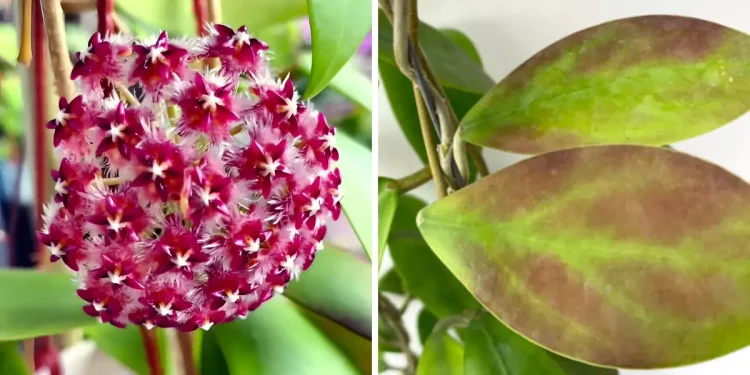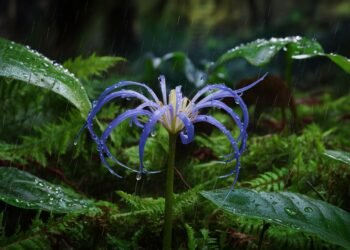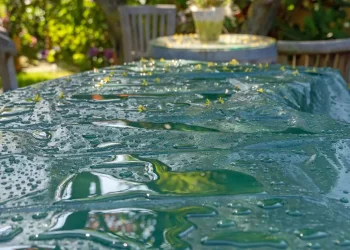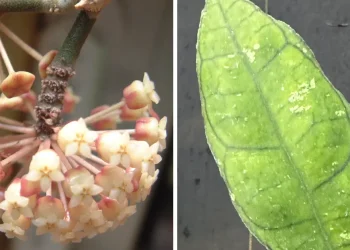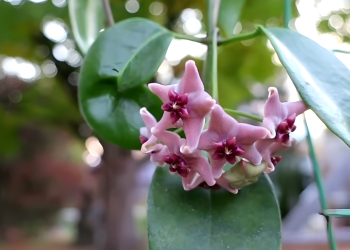If you are on the lookout for a new addition to your indoor sanctuary, say hello to Hoya Elmeri.
Hoya Elmeri is a climbing plant with light green leaves that turn red when exposed to sunlight. It grows clusters of dark purple, star-shaped flowers with an incredible smell. This one stays its life pretty compact, growing straight up, so it won’t mind staying in your office.
That you already love it? Then keep on reading because, in this article, we’ll cut through the foliage to bring you practical insights into caring for this green gem.
Hoya Elmeri Profile
Hoya Elmeri, like many other flowers from the Hoya group, originates from the lush landscapes of Southeast Asia, bringing a touch of tropical allure to your indoor haven. Its name honors Adolph Daniel Edward Elmer (1870-1942), an American botanist and plant collector active in the Philippines.
In its native habitat, this resilient plant thrives beneath the shelter of towering canopies. As such, it prefers filtered light. But it is very undemanding in other fields, too—let the soil dry out between waterings and maintain stable humidity, and your Hoya will thrive!
It’s ideal for anyone looking for a flowering plant that isn’t tiny small, but won’t take all your spare space either. The stems are smooth, with few branches growing up to 4.8 inches (12 centimeters) long. Growing from the stems, you can find fleshy sharp leaves that are up to 6 inches (15 centimeters) long and up to 2.6 inches (6.5 centimeters) wide.
And if you care for it right, you can see your Hoya blooming anywhere from spring to summer. When it does, it creates multiple clusters of small, star-shaped purple flowers with transparent back parts, which creates a beautiful contrast.
How to Care for Hoya Elmeri
Light Requirements
Hoya Elmeri grows well indoors in bright, indirect light. It will temporarily tolerate low light levels, although it can get weak and prone to diseases, producing fewer leaves and may not flower without adequate light.
You should find a place where your Hoya will be able to get at least 4 hours of light daily.
Soil
Hoyas prefer and do their best in soils that are nearly natural or slightly acidic. If that’s checked, your H. Elmeri will do fine in about every well-draining soil with high aeration. It develops root rot very easily, so make sure the soil doesn’t hold too much water.
Peat-based, mixes with orchid bark and vermiculite or perlite will ensure that. Don’t be afraid to use a cactus mix if you have some left.
Temperature
As a tropical plant, it does the best in warm, moist, humid environments. During spring and summer, you can even move it outside and keep it there as long as the temperatures are above 60°F (15°C).
Avoid exposing it to drafts or sudden temperature extremes.
Watering
Water regularly, letting the soil dry out between watering. During warm months you should get the soil really soaked until the water drains out of the drainage holes.
In fall and winter, H. Elmeri will go dormant and won’t require that much water. Check how fast the soil dries out and modify your watering schedule accordingly.
Fertilizing
Hoyas are not particularly demanding in terms of nutrients. You can feed it with half-strength potassium-based fertilizer during the growing season, but be careful about overfertilizing.
Come fall and winter, cut back on fertilizing as the plant goes dormant and experiences a natural slowdown in growth and other processes.
Propagation and Repotting
Hoya Elmeri is a succulent plant and grows particularly well from stem cuttings—take a healthy cutting with at least one leaf and let it develop roots in a well-draining medium. The best time for propagation is during the growing season, in spring or summer.
Leaf cuttings can be a bit more problematic, but with the correct environment it should succeed.
When it comes to repotting, many plants from the Hoya group are known as slow-growers, and it’s no different with Hoya Elmeri. They develop quite shallow root systems and do not require a deep container or being repotted frequently.
Consider repotting every 2-3 years at the start of the growing season once it outgrows its container.

